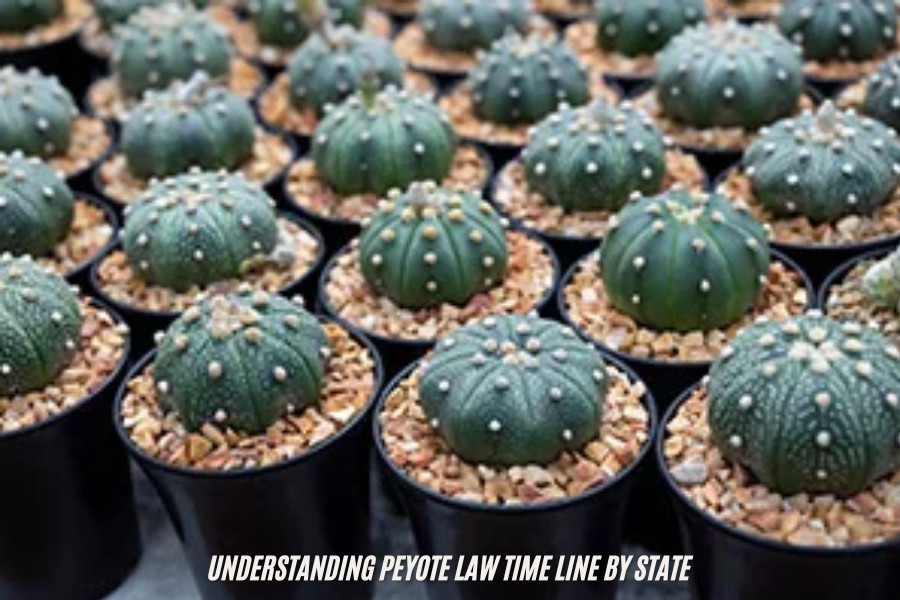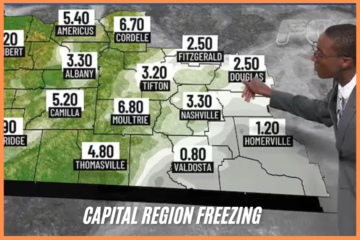Peyote Law Time Line By State and northern Mexico. This plant is significant because of its psychoactive effects, particularly the hallucinogen mescaline. For thousands of years, peyote has been used by Native American tribes as part of religious ceremonies, offering an avenue for spiritual connection and healing. However, its legal status has been complex, as its psychoactive properties have raised concerns within the broader societal and governmental context. The evolution of peyote’s legality in the United States has been influenced by a combination of federal regulations, state laws, and cultural concerns. Let’s explore how peyote laws have evolved state by state, particularly in light of religious freedom and cultural preservation.
The Early Legal Battles and Federal Classification
The legal issues surrounding peyote began in the early 20th century. As the U.S. government sought to control and assimilate Native American populations, their cultural practices, including peyote use, were under scrutiny. Peyote was criminalized under the federal Controlled Substances Act (CSA) of 1970, which classified peyote as a Schedule I drug. This classification indicated that peyote was considered to have a high potential for abuse and no accepted medical use, which made it illegal to cultivate, possess, or use outside of specific contexts.
The CSA presented a direct challenge to Native American religious practices. Peyote was an integral part of their religious ceremonies, especially within the Native American Church (NAC), which was founded in the late 19th century. Despite the religious significance, the legal landscape for peyote use was dramatically limited following the CSA’s passing, setting the stage for future legal battles and debates.
The American Indian Religious Freedom Act of 1978
In response to the growing concern over religious suppression, Congress passed the American Indian Religious Freedom Act (AIRFA) in 1978. This legislation recognized the rights of Native Americans to practice their traditional religions and sought to protect their access to sacred objects, sites, and ceremonies. While the AIRFA laid a foundation for religious freedom, it did not specifically address peyote use, leaving an ambiguity regarding whether Native Americans could use peyote legally in their religious practices.
For the next several years, the legal landscape remained unclear, as the AIRFA did not fully protect the religious use of peyote from state restrictions, and no clear guidelines were given on how federal and state laws should interact regarding this issue.
Employment Division v. Smith (1990) and Its Impact
The legal situation regarding peyote use was significantly affected by the Supreme Court case Employment Division v. Smith in 1990. In this case, two Native American men were denied unemployment benefits after being fired for using peyote as part of a religious ceremony. The Court ruled that the state could deny unemployment benefits because the use of peyote was illegal, even though it was part of their religious practice.
The decision in Smith reinforced the notion that states had the power to prohibit the use of peyote, even in a religious context, and it did not constitute a violation of the First Amendment’s guarantee of religious freedom. This ruling was seen as a setback for Native Americans, as it allowed state governments to more aggressively enforce laws prohibiting peyote use, despite its sacred role in Native American religion.
The Religious Freedom Restoration Act (1993)
In response to the Smith decision, Congress passed the Religious Freedom Restoration Act (RFRA) in 1993. This act aimed to protect individuals’ religious practices from government interference by requiring the government to demonstrate that any law that burdens religious practice is both necessary and the least restrictive option. RFRA was intended to overturn the Smith ruling, making it more difficult for the government to infringe on religious freedoms.
While RFRA helped provide a stronger foundation for religious freedom, it still did not specifically address peyote use. The federal government, however, began to recognize that Native Americans needed clear legal protection regarding peyote and its ceremonial use.
Wiki
| State | Legal Status | Key Details |
| Texas | Legal for religious use by Native Americans | Peyote is legal for religious ceremonies, but its distribution is highly regulated. Native American Church members must obtain licenses to distribute it. |
| Arizona | Legal for religious use | Arizona allows the use of peyote for religious purposes, including use by Native Americans outside the Native American Church. |
| Oregon | Legal for religious use | Oregon provides protections for the use of peyote in religious ceremonies, in line with federal law. |
| New Mexico | Legal for religious use | New Mexico has explicit laws permitting the religious use of peyote for Native American tribes and church members. |
| Nevada | Legal for religious use | Nevada allows peyote use for religious purposes by Native Americans, in accordance with federal protections. |
| Idaho | Restricted to Native American tribes | Idaho permits peyote use for religious ceremonies but restricts it to members of federally recognized Native American tribes. |
| California | Decriminalized in certain cities | Some cities, like Oakland, have decriminalized peyote along with other entheogens, although state law remains restrictive for religious use. |
| Colorado | Legal for religious use | Colorado allows the use of peyote for religious purposes but remains in line with federal laws regarding its ceremonial use by Native American tribes. |
| Utah | Legal for religious use (restrictions may apply) | Utah allows peyote for religious use by Native Americans, but its use is tightly controlled by state law. |
| Washington | Legal for religious use (as per federal law) | Washington State follows federal guidelines, allowing peyote use for religious ceremonies by Native Americans. |
| Missouri | Restricted use (often prohibited except for religious ceremonies) | Peyote use is generally prohibited except for ceremonial purposes related to Native American religious practices. |
| Michigan | Legal for religious use (under federal law) | Michigan supports the use of peyote in religious ceremonies by Native Americans but follows federal regulations. |
Amendments to AIRFA in 1994
To resolve the ambiguity, Congress amended the American Indian Religious Freedom Act in 1994. The amendment clarified that the use, possession, and transportation of peyote for religious purposes was legal for members of federally recognized Native American tribes. It specifically stated that Native Americans could use peyote in connection with traditional religious ceremonies without fear of legal repercussion, as long as the use was in a bona fide religious context.
This amendment was a critical step in safeguarding Native American religious practices, as it ensured that their use of peyote was protected by federal law. Despite this federal protection, the legal landscape for peyote use was still influenced by state laws, leading to variations in how peyote use was regulated across the country.
State-by-State Analysis of Peyote Laws
Although federal law provides broad protection for Native Americans’ right to use peyote, the legal framework varies significantly from state to state. Some states have laws that align with federal protections, while others maintain stricter regulations or outright bans on peyote use.
Texas
Texas is one of the primary states where peyote is found in the wild, and it has its own set of specific regulations surrounding its use. Texas law allows the sale and possession of peyote, but only for religious purposes and by members of the Native American Church. To purchase peyote legally, individuals must show that they are members of the church and must obtain a license to distribute peyote.
The Texas law is strict in its enforcement, and peyote harvesting is regulated to ensure that the plant is not over-harvested, a critical issue for conservation efforts. Due to its natural presence in Texas, the state has been at the center of the peyote debate, balancing conservation concerns with the need to protect Native American religious rights.
Arizona
In Arizona, the law is more inclusive than in some other states. Arizona permits the use of peyote for religious purposes, even for individuals outside of the Native American Church. The state recognizes the importance of peyote in religious practices and does not restrict its use to a single group. This broader interpretation of religious freedom allows for greater access to peyote for ceremonial purposes, particularly within indigenous religious practices.
Oregon and New Mexico
Both Oregon and New Mexico have clear legal protections for the religious use of peyote, reflecting a broader acceptance of peyote’s importance within Native American traditions. These states have laws that explicitly allow the use, possession, and transportation of peyote by Native American tribes for religious purposes. These laws are in line with federal protections under the 1994 amendment to the AIRFA.
Nevada
Nevada also allows the religious use of peyote under similar terms as Oregon and New Mexico. The law in Nevada permits the possession and use of peyote in connection with traditional religious ceremonies, but this is limited to Native Americans who practice these traditions.
Idaho
Idaho’s laws regarding peyote are more restrictive. While federal law protects the religious use of peyote, Idaho law explicitly prohibits its use by non-Native Americans. The use of peyote is restricted to individuals who can demonstrate membership in a federally recognized Native American tribe. This stricter stance has been a point of contention for advocates of religious freedom, as it limits access to peyote for other religious practices.
The Issue of Sustainability and Conservation
One of the critical issues surrounding peyote use is the sustainability of the cactus population. Peyote grows slowly and is highly susceptible to over-harvesting. This has become a major concern, especially in Texas, where the cactus is most abundant. Environmentalists, along with Native American groups, are working to create sustainable harvesting practices and to explore the possibility of cultivating peyote to meet religious demand without damaging wild populations.
Several initiatives have been proposed to regulate the harvest of peyote and ensure that the plant remains available for future generations. For example, some tribes are exploring agricultural methods to cultivate peyote in controlled environments, which could alleviate the pressure on wild populations.
Modern-Day Challenges and Cultural Shifts
In recent years, there has been a cultural shift toward recognizing the spiritual benefits of psychedelics, including peyote. Some advocates argue that peyote should be decriminalized or legalized for broader therapeutic use, not just for religious purposes. This is part of a growing movement advocating for the legalization of psychedelic substances for their potential benefits in treating mental health conditions like PTSD, anxiety, and depression.
Cities like Oakland, California, have decriminalized the use of certain entheogenic substances, including peyote. However, these efforts are often more focused on substances like psilocybin mushrooms, leaving peyote’s legal status somewhat isolated and dependent on state regulations.
Despite these efforts, the primary concern remains the preservation of peyote for Native American religious practices, and the challenge of balancing cultural, legal, and environmental factors continues to shape the discussion surrounding peyote use.
Conclusion
The journey of Peyote Law Time Line By State reflects the complexities of balancing religious freedoms, state regulations, and environmental concerns. From its early days as a sacred substance used by Native American tribes to its criminalization and eventual legal protections, the evolution of peyote laws has been shaped by both legal battles and cultural shifts. While the federal government has offered some protections to Native American religious practices, the state-by-state differences in peyote regulation show that challenges remain in ensuring equitable access to this sacred plant. As society continues to explore the potential benefits of psychedelics, including peyote, it is crucial to remain mindful of its significance in Native American cultures and the need to protect both the plant and the religious practices tied to it.
FAQs
1. What is Perry Ray Anthony known for?
Perry Ray Anthony is a prominent figure whose name has been associated with various topics in the public eye. If you are referring to a specific person by this name in connection with peyote laws or Native American religious practices, it may be helpful to provide more context or details regarding the individual’s contributions to the field or topic.
2. Is peyote legal to use in the United States?
Peyote is legal for use in religious ceremonies by members of federally recognized Native American tribes under federal law. However, each state has its own laws regarding its use, with some states imposing stricter regulations or outright bans on peyote use outside of religious contexts.
3. Can non-Native Americans use peyote legally?
In most cases, peyote use is restricted to members of Native American tribes for religious purposes. Some states allow broader access for religious ceremonies, but others, such as Idaho, impose strict limits on non-Native American use.
4. How is peyote harvested?
Peyote is harvested primarily from the wild in areas like Texas and northern Mexico. Due to over-harvesting concerns, there are efforts to regulate its harvest and promote sustainable practices. Some tribes have begun cultivating peyote to ensure its continued availability for religious ceremonies.
5. What are the environmental concerns surrounding peyote?
Peyote is a slow-growing cactus, and over-harvesting can threaten wild populations. Conservation efforts aim to protect the plant and ensure it remains available for future generations. Sustainable harvesting practices and the cultivation of peyote in controlled environments are being explored as potential solutions.
6. What does the Religious Freedom Restoration Act (RFRA) have to do with peyote use?
The RFRA, passed in 1993, was a response to the Supreme Court’s decision in Employment Division v. Smith (1990). It aimed to protect religious practices, including the use of peyote by Native Americans, by requiring the government to prove that any law that interferes with religious freedom is necessary and the least restrictive option.
7. Can peyote be used for medical purposes?
While peyote has historically been used for religious purposes, there is growing interest in its potential therapeutic effects. Some advocates suggest that peyote, like other psychedelics, may offer benefits for mental health conditions such as anxiety, depression, and PTSD. However, its use remains heavily regulated and is primarily legal in religious contexts.
Discover the latest news and updates on Magazine Format




